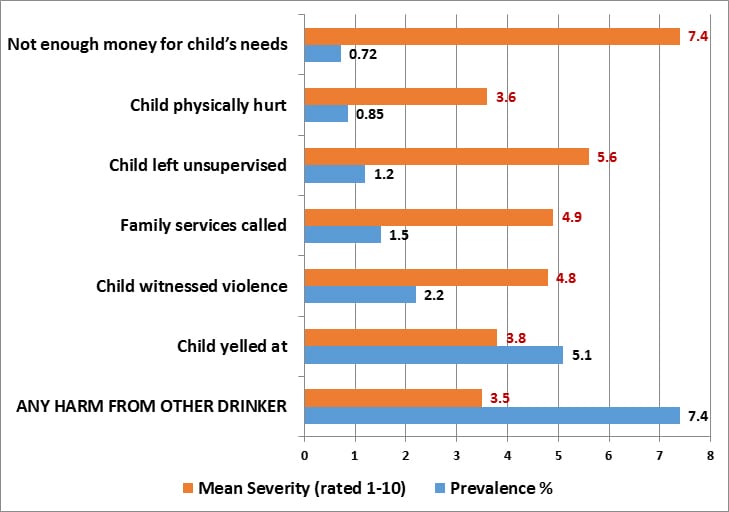Alcohol’s Harm to Children: Findings from the 2015 United States National Alcohol’s Harm to Others Survey
Research article
Abstract
Objectives
To examine the prevalence and severity of alcohol’s harm to children in the US and the relationship of the harmer to the child, and to examine caregivers’ sociodemographic characteristics, alcohol use, and exposure to harm due to an alcohol using spouse/partner or other family member as risk factors for alcohol’s harm to children.
Study design
The study reports data on 764 caregivers (defined as persons with parental responsibility for at least 1 child aged ≤17 years) from the 2015 National Alcohol’s Harm to Others Survey, a dual-frame national sample of US adults.
Results
Overall 7.4% of caregivers reported alcohol’s harm to children in the past year. Risk factors for alcohol’s harm to children included the caregiver’s own experience of alcohol’s harm from a spouse/partner or other family member. Caregivers with a heavy alcohol user in the household were significantly more likely to report harm to children. A caregiver’s own heavy alcohol use was not a significant risk factor for children in his or her care.
Conclusions
Alcohol places a substantial burden on children in the US. Although a caregiver’s own alcohol use can harm children, other alcohol user also increase the risk of alcohol’s harm to children. Screening caregivers to determine whether there is a heavy alcohol user in the household may help reduce alcohol’s harm in the family without stigmatizing caregivers, who themselves may not be heavy alcohol users.
Implications
Our study indicates child maltreatment data might be missing broader impacts of harms resulting from a person’s drinking,” said lead author Lauren M. Kaplan, as per, ARG.
Findings showed that less than two percent of caregivers reported calling family services, which suggests other studies are underestimating harms when CPS is not involved.”
